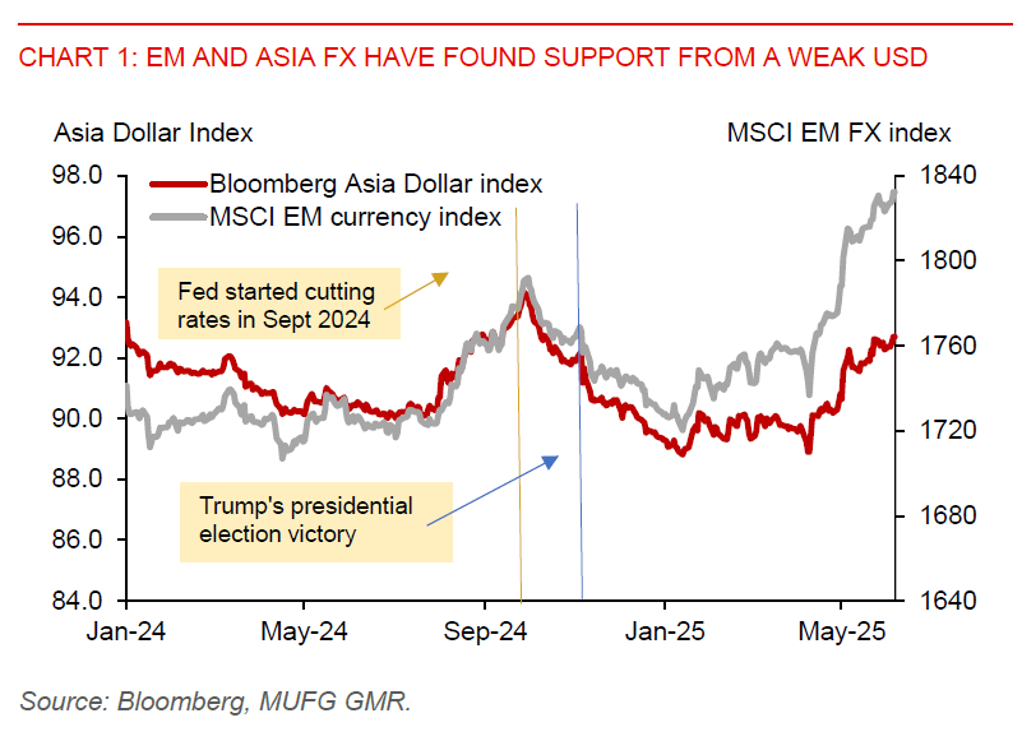Ahead Today
G3: US nonfarm payrolls, unemployment rate; eurozone Q1 GDP 3rd estimate, Germany industrial production
Asia: Vietnam CPI, RBI policy rate decision, Thailand CPI
Market Highlights
The call between US President Trump and Chinese President Xi has apparently ended on a positive note, with Trump saying the call resulted in a very positive conclusion. The discussion was mainly on trade and both parties will meet again shortly. There was no discussion about Russia/Ukraine or Iran during the call. The US dollar reversed its initial intraday losses, but it remained under cyclical downward pressure.
Beyond policy uncertainty, soft US economic data have also weighed on the US dollar. Initial jobless claims rose to 247,000 for the week ended 31 May, up from 239,000 in the prior week and higher than the consensus estimate of 235,000. This could potentially signal emerging softness in labour market. Bloomberg consensus forecasts today's nonfarm payrolls to slow to 125,000 in May, from 177,000 in April. Meanwhile, the frontloading of US imports in Q1 appears to have ended, with imports plunging in April and the trade deficit narrowing sharply to $61.6bn from $138.3bn in March.
The ECB cut rates by 25bps to 2.00% yesterday, as widely expected. ECB President Lagarde has signalled that the policy easing cycle is nearing its end, inflation has been largely contained, and the growth outlook could be revised up. With the Fed currently on hold, the ECB’s move has widened the policy rate gap with the US. The US dollar is trading even weaker than what rate differentials would suggest. While rate differentials have recently lost their influence on FX dynamics, this disconnect may not persist for long.

Regional FX
Asian currencies strengthened against the US dollar yesterday, led by the Korean won (+0.7%), Malaysian ringgit (+0.5%), and Thai baht (+0.6%). If the upcoming US nonfarm payrolls report comes in significantly weaker than expected, it could trigger a dovish repricing of the Federal Reserve’s rate path for H2 2025. This would likely weigh on the US dollar and support capital inflows into Asia, particularly benefiting economies with strong domestic demand and persistent trade surpluses.
The key event in Asia today is the Reserve Bank of India’s (RBI) policy rate decision. We expect the RBI to cut its benchmark rate by 25bps to 5.75%. Subdued inflation, at 3.2%yoy in April, provides room for further RBI easing. Elsewhere in the region, inflation has also been moderating, reinforcing the case for policy support. The Philippines’ CPI slowed to 1.3%yoy in May (from 1.4%yoy in April), while Taiwan’s inflation eased to 1.55%yoy from 2.0%yoy, below market expectations. Thailand’s CPI, due today, is expected to confirm that the economy remains in deflation, further supporting the case for accommodative policy.
